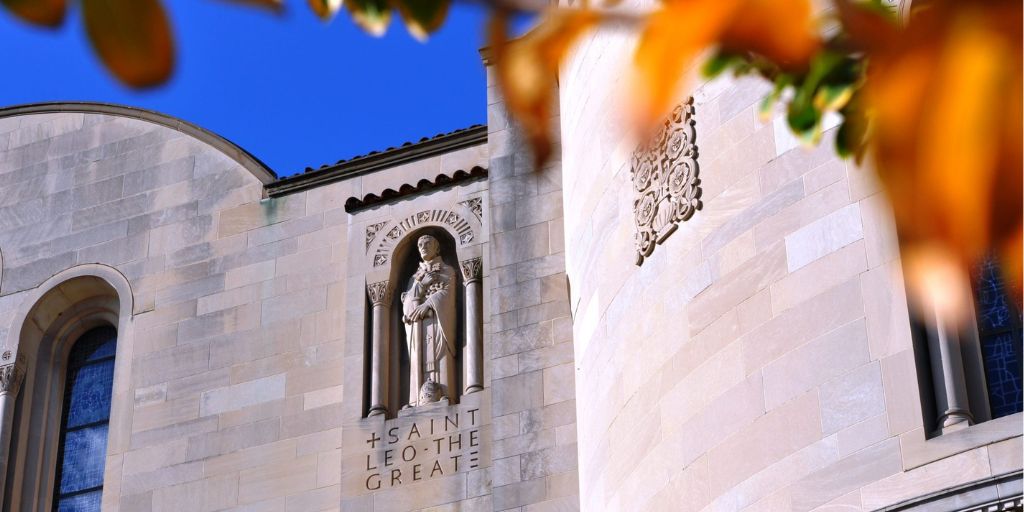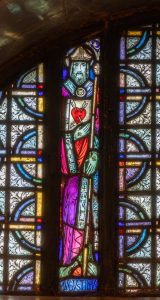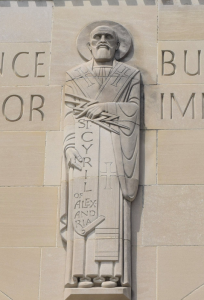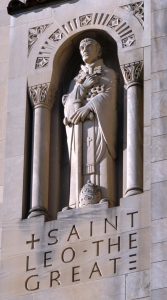
In this third post in our Doctors of the Church series, we invite you to learn about three early Doctors of the Church and their contributions to the faith. From Saint Augustine of Hippo, whose impact on Christian theology and Western philosophy is unparalleled, to the saint who defeated Nestorianism, each of these men helped shape the doctrine of the early Church and draw others closer to the truth of the Gospel.
Read Part I and Part II of the Doctors of the Church series.
Saint Augustine of Hippo (c. 354-430)

Saint Augustine was born in northern Africa in 354. Despite being raised by a devoted Christian mother, he was a difficult child, and grew to be an atheist. A highly intelligent scholar who had received the finest education, he founded a school of rhetoric in Rome in 383. However, dissatisfied with the city, he moved to Milan in a year’s time, where he met the bishop Saint Ambrose, who was a convincing orator with a formidable command of rhetoric. The integrity of Saint Ambrose had a particular impression on Augustine and was instrumental in his conversion in 387.
Following the passing of his mother, Augustine returned to North Africa, and founded a religious order in Tagaste. He was later ordained, and in 395, became the bishop of Hippo.
Not only did Augustine have a significant impact on Christianity, but on Western culture and philosophy more broadly. By some accounts, his Confessions is considered the first autobiography of the West, and is perhaps the “most widely read book of Christian antiquity.” His work City of God lays out a theological framework which contrasts what he calls the City of God with the city of the world, offering insight into the proximate nature of what can be accomplished in earthly government. The sheer volume of writings Augustine produced in his lifetime is staggering all on its own; he penned an estimated 3,000 letters and homilies, as well as an additional 1,000 other publications of significant philosophical and theological depth.
Saint Augustine is featured in the East Façade, the Our Mother of Good Counsel Chapel, the Baldachin, and the Saint Catherine of Alexandria Chapel of the Basilica.
Saint Cyril of Alexandria (c. 376-444)

The nephew of the Bishop of Alexandria, Saint Cyril was born in 376 A.D. and grew up in an era of rebirth for Christianity in Egypt’s capital. In 412, Cyril took his uncle’s position as bishop, and soon caused a stir with his opinionated nature and reactive temper. While he zealously defended what he believed in, he often acted rashly. He closed the churches of the Novatian heretics, fell into spats with civic authorities, and battled paganism with force.
Over the course of his life, Cyril became more even-tempered and took the helm in the fight against Nestorianism, a heresy promulgated by Nestorius, who served as the Archbishop of Constantinople in 428 A.D. This heresy purported that Jesus Christ’s human and divine natures were separate; that while Christ was indeed human and God, His body only served as a shell for His divine spirit. In Nestorius’ account, the child which Mary gave birth to was Jesus, but not the eternal God of John 1:1.
Cyril rightfully refuted these claims, explaining how this heresy defied the truth of the Incarnation and fatally undermined the doctrine of redemption. As a result of Cyril’s efforts, Nestorius was condemned at the Council of Ephesus in 341. Though Cyril was far from perfect, he is proof of how God can take anyone and use them for His divine purpose. He passed away on June 27, 444. You can find Saint Cyril of Alexandria portrayed in the Basilica in the east portico and the Saint Lucy Chapel window.
Saint Leo I, the Great (c. 400-461)

Little is known about Saint Leo’s early life, except that he was born in Tuscany in the beginning of the fifth century. In approximately 430 A.D., Leo earned a place as a deacon of the Church of Rome. About 10 years later, the Roman Emperor’s daughter selected him to participate in a special peace mission in Gaul. However, when Pope Sixtus III passed away later that same year, Leo was called back to Rome to be consecrated as the new Pope.
At the time of Saint Leo’s succession, the collapsed Roman Empire was frequently threatened by barbarian attacks, and there was division in the Church over the true nature of Christ. Leo used his position to provide a steadying hand to the Church – and to Rome – through his thoughtful leadership. In 451, when 350 Bishops gathered in the Council of Chalcedon to discuss Christology, Leo presented a treatise, in which he stated that Christ is “one Person [with] two natures,” a statement which allowed the Church to clarify the confusion regarding Christ’s humanity and divinity once and for all. This idea was adopted as a key concept of orthodoxy.
The most notable event of Leo’s papacy took place in 452, when he rescued Rome from the destruction of the Huns. After Attila and his army invaded Italy and prepared to march upon Rome, Pope Leo and two Roman senators approached him unarmed, and begged him to halt the attack. Because of Leo’s diplomacy, Attila conceded to his request, and departed the peninsula.
Saint Leo served as Pope for over 21 years, until his passing in 461. You can find him portrayed in the East Façade of the Basilica.
Sources:
“Benedict XVI – General Audience – Paul VI Audience Hall,” 5 March 2008, The Vatican.
Butler’s Lives of Saints, ed. Bernard Bangley.
“St. Cyril of Alexandria,” Franciscan Media.
The Way of Saints, Dr. Tom Cowan.


